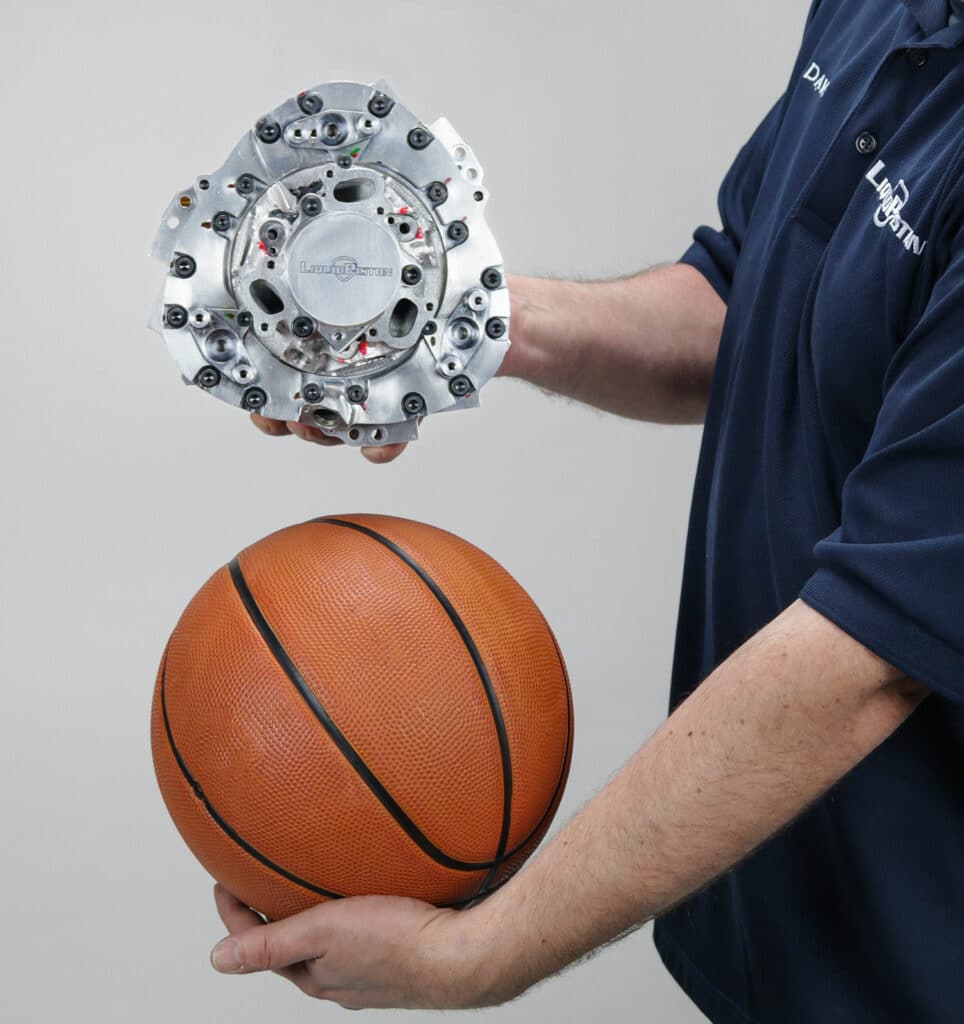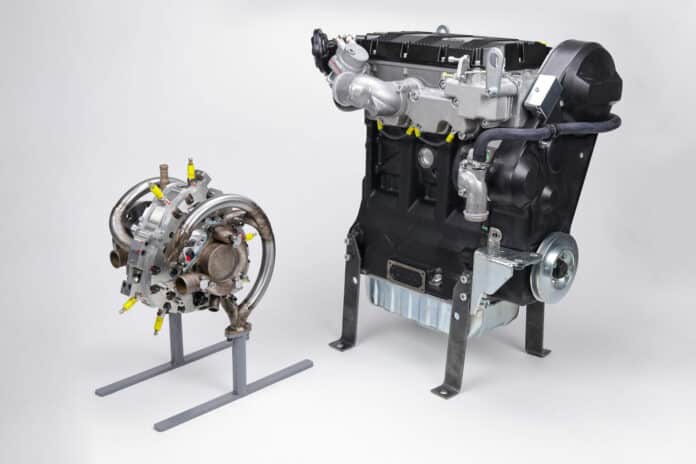LiquidPiston has announced its intent to commercialize the XTS-210, a 25-horsepower, two-stroke, supercharged, liquid-cooled 210cc X-Engine variant. The basketball-sized XTS-210 engine claims five times the power of an equivalent size or weight diesel engine and three times the torque.
The commercialization and development have been boosted by the recent $9 million contract from the U.S. Army to develop a prototype core engine based on the XTS-210 design for military applications.
Currently, under development, the XTS-210 design reduces size and weight by nearly 80% over current diesel piston engines with comparable power output while targeting an SFC (specific fuel consumption) of under 350 g/kwh at maturity.
The XTS-210 engine addresses the fuel efficiency, lubrication, and fuel type limitations of the traditional Wankel rotary engine, an influential engine design developed in the 1950s.
The engine weighs 42 lbs (19 kg) and has a displacement of 210 ccs. It can operate on various fuels, including diesel and kerosene/jet fuel, and the company is aiming for about 26.8 hp (20 kW) and 29.4 Nm of torque at 6,500 rpm. According to LiquidPiston, these numbers compare favorably against the 18.8 kW (25.2 hp) and 63 Nm peak outputs of the Kohler KDW1003 E536A.

The X-Engine is inherently simple in design, with just two primary moving parts – a rotor and a shaft. The 25-horsepower XTS-210 adds up to one bar of boost through supercharging and operates as a two-stroke, producing six combustion events per revolution of the rotor to deliver smooth power from a lightweight package.
Moreover, the engine is ultra-portable and configurable for operation in both engine-only and hybrid-electric modes. It is capable of running up to 7,000 RPM, which matches well with small and lightweight electrical machines, enabling increased mobility for power generation and hybrid applications.
The XTS-210 is being designed to meet demanding commercial and military heavy-fueled applications, including mobile electric power generation, primary or hybrid-electric propulsive power for vehicles, including vertical take-off and landing aircraft (VTOL) and small unmanned aircraft systems (sUAS), as well as auxiliary power units.
“There are essentially no diesel engines in the 25-horsepower power class today that are suitable for aerospace and mobile military applications, where size and weight parameters are especially critical,” said Dr. Alec Shkolnik, co-founder and CEO of LiquidPiston. “The reduced weight, size, and heavy- or multi-fuel capability of the XTS-210 deliver significant end-system capability and utility benefits, especially for the military to reduce supply chain and logistical burdens in an era where ‘power on the move’ is increasingly important.”
“Following nearly two decades of breakthrough thermodynamics research with various types of rotary diesel engines, we are excited to converge on this latest generation as our first X-Engine model that we plan to bring to market.”
The company is targeting to deliver an XTS-210 prototype to the U.S. Army in 2024. It has previously prototyped several variants of rotary X-Engines, demonstrating significant versatility in engine architecture, including naturally aspirated four-stroke versions ranging from five to 40 horsepower.
